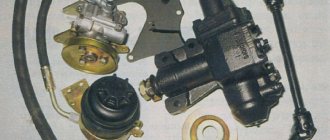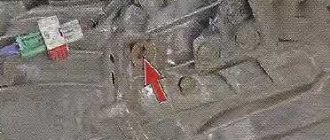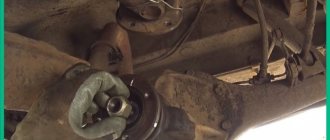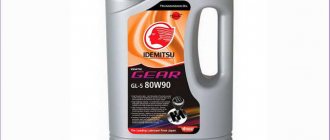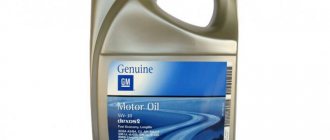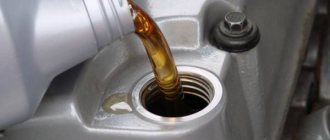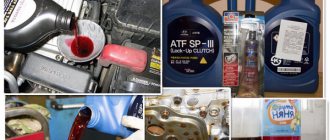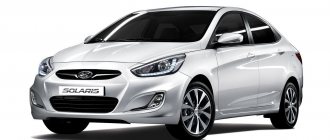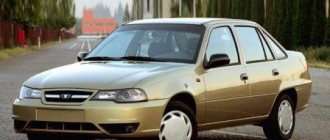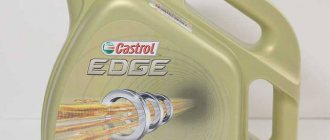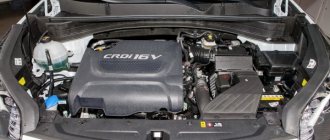Hydraulic power steering is an important component that ensures impeccable and easy control of vehicles. The main task of power steering is to reduce the load on the steering wheel when changing the direction of movement of the vehicle. For stable operation of this unit, it is necessary to regularly change the fluid in the amplification system. Most car manufacturers recommend performing this procedure once a year.
The functioning and proper condition of the power steering largely depend on the quality and composition of the oil poured into the power steering system. The optimal type of fluid for a particular brand of car is usually indicated in the accompanying instructions for it. Timely replacement and competent selection of power steering oil fluid is the best guarantee of trouble-free operation of the machine for many years.
Color classification
It is wrong to be guided only by color gradation when choosing oil, although this practice is widespread among car owners. It is also often indicated what color liquids can be mixed and which ones should not be mixed.
Mixing is contraindicated with liquids based on composition and not color, and since now both mineral water and synthetics can be presented in any color, you should treat this information very carefully.
Red ATF gear oil is usually synthetic, the Dexron brand from General Motors is considered the standard, but there are products from other manufacturers, such as Revenol, Motul, Shell, Zic, etc.
Yellow oil, produced by the Daimler concern and under its license, is used in Mercedes-Benz hydraulic boosters. It can be synthetic and mineral.
Green oil. For the most part, multifunctional and universal liquids can be either synthetic or mineral in composition. They are used in power steering, suspension and other systems that operate on liquids. It cannot be mixed with other colors, except in cases where the manufacturer declares full compatibility, for example Comma PSF MVCHF is compatible with some types of Dexron.
Is it possible to mix power steering fluids?
What should you do if you do not have the brand of fluid that your car's power steering system uses? You can mix similar compositions, provided that they belong to the same type ( “synthetics” and “mineral water” should not be mixed under any circumstances ). In particular, yellow and red oils are compatible . Their compositions are similar, and they will not harm the power steering. However, it is not recommended to drive this mixture for a long time. As soon as possible, replace your power steering fluid with the one recommended by your car manufacturer.
But green oil should not be added to red or yellow under any circumstances. This is due to the fact that synthetic and mineral oils cannot be mixed with each other.
Liquids can be divided into three groups , within which it is permissible to mix them with each other. The first such group includes “conditionally miscible” mineral oils of light colors (red, yellow). The figure below shows samples of oils that can be mixed with each other if there is an equal sign opposite them. However, as practice shows, mixing oils between which there is no equal sign is also acceptable, although undesirable.
The second group includes mineral oils of dark tones (green), which can only be mixed with each other. Accordingly, they cannot be mixed with liquids from other groups.
The third group also includes synthetic oils , which can only be mixed with each other. However, it is worth paying attention that such oils should be used in the power steering system only if this is clearly stated in the manual for your car.
Mixing fluids most often occurs when adding oil to the system. And this must be done when its level drops, including due to leakage. The signs described below will tell you about this.
Liquid composition
Based on the composition of the power steering fluid, it can be divided into mineral, semi-synthetic and synthetic. The chemical composition determines the basic set of oil functions:
- Viscosity characteristics;
- Lubricating properties;
- Protection of parts from corrosion;
- Prevents foaming;
- Temperature and hydraulic properties.
Synthetics and mineral water cannot be mixed with each other, since the types of additives in them have fundamental differences.
Synthetics
These are high-tech liquids, in the production of which the most modern developments and additives are used. Oil fractions for synthetics are purified by hydrocracking. Polyesters, polyhydric alcohols and sets of additives give them outstanding characteristics: a wide range of operating temperatures, stable oil film, long service life.
The main reason why synthetic-based hydraulic fluid cannot be poured into power steering intended for mineral ones is its aggressive effect on rubber products, of which there are many in the hydraulic booster. Where synthetics are used, the rubber has a completely different composition and is made on a silicone basis.
Semi-synthetics
A mixture of synthetic and mineral oils, due to which the latter receive significant improvements in performance: reduced foaming, fluidity, heat dissipation.
Semi-synthetic fluids include such well-known fluids as: Zic ATF Dex 3, Comma PSF MVCHF, Motul Dexron III and others.
Mineralka
Mineral-based oils contain petroleum fractions (85-98%), the rest are additives that improve the performance of the hydraulic fluid.
They are used in hydraulic boosters containing seals and parts based on ordinary rubber, since the mineral component is neutral and is not harmful to rubber products, unlike synthetics.
Mineral power steering fluids are the most inexpensive, but they also have a short service life. Mobil ATF 320 Premium is considered a good mineral oil; Dexron oils up to and including the IID marking were also mineral.
Signs of a power steering fluid leak
There are several simple signs of a power steering fluid leak. By their appearance, you can judge that it is time to change or top up. And this action is associated with choice. So, signs of a leak include:
- decreased fluid level in the expansion tank of the power steering system;
- the appearance of smudges on the steering rack, under rubber seals or on oil seals;
- a knocking sound in the steering rack when driving:
- to turn the steering wheel, you need to apply more effort;
- the power steering system pump began to make extraneous noise;
- There was significant play in the steering wheel.
If at least one of the listed symptoms appears, it is necessary to check the fluid level in the tank. And if necessary, replace or top up. However, before doing this, you should decide which liquid to use for this.
You cannot operate a car without power steering fluid, since this is not only harmful to it, but also unsafe for you and the people and cars around you.
Different types of oils
Dexron is a separate class of ATF fluids from General Motors, produced since 1968. Dexron is a trademark, produced both by GM itself and by other companies under license.
ATF (Automatic Transmission Fluid) - oils for automatic transmissions, often used by Japanese automakers and in power steering.
PSF (Power Steering Fluid) - literally translated as power steering fluid.
Multi HF are special, universal power steering fluids that have approvals from most automobile manufacturers. For example, CHF liquid, produced by the German company Pentosin, has received approvals from BMW, Ford, Chrysler, GM, Porsche, Saab and Volvo, Dodge, Chrysler.
Types of power steering fluids
Before answering the question of what kind of power steering oil, you need to determine the existing types of these fluids. Historically, it has happened that car enthusiasts distinguish them only by color, although this is not entirely correct. After all, it is more technically competent to pay attention to the tolerances that power steering fluids have. In particular:
- viscosity;
- mechanical properties;
- hydraulic properties;
- chemical composition;
- temperature characteristics.
Therefore, when choosing, first of all, you need to pay attention to the listed characteristics, and then to the color. In addition, the following oils are currently used in power steering:
- Mineral . Their use is due to the presence of a large number of rubber parts in the power steering system - o-rings, seals and other things. In severe frosts and extreme heat, rubber may crack and lose its performance properties. To prevent this from happening, they use mineral oils, which best protect rubber products from the listed harmful factors.
- Synthetic . The problem with their use is that they contain rubber fibers, which are harmful to the rubber sealing products present in the system. However, modern automakers have begun to add silicone to rubber, which neutralizes the effect of synthetic fluids. Accordingly, the scope of their use is constantly growing. When buying a car, be sure to read in the service book what kind of oil to pour into the power steering. If there is no service book, call an authorized dealer. In any case, you need to know clear tolerances for the possibility of using synthetic oil.
Let us list the advantages and disadvantages of each of the mentioned types of oils. So, the benefits of mineral oils include:
- gentle effect on rubber products of the system;
- low price.
Disadvantages of mineral oils:
- significant kinematic viscosity;
- high tendency to form foam;
- short service life.
Advantages of fully synthetic oils :
Differences in color between different oils
- long service life;
- stable operation in any temperature conditions;
- low viscosity;
- the highest lubricating, anti-corrosion, antioxidant and foam-suppressing properties.
Disadvantages of synthetic oils:
- aggressive effect on rubber parts of the power steering system;
- approval for use in a limited number of vehicles;
- high price.
As for the common color gradation, automakers offer the following power steering fluids:
- Of red color . It is considered the most advanced because it is created on the basis of synthetic materials. They belong to Dexron, which represent the class of ATF - transmission fluids for automatic transmissions (Automatic Transmission Fluid). Such oils are often used in automatic transmissions. However, they are not suitable for all vehicles.
- Yellow color . Such fluids can be used for automatic transmissions and power steering. They are usually made based on mineral components. Their manufacturer is the German concern Daimler. Accordingly, these oils are used in cars produced by this concern.
- Green color . This composition is also universal. However, it can only be used with a manual transmission and as a power steering fluid. The oil can be made from mineral or synthetic components. Usually more viscous.
Many automakers use the same oil for automatic transmissions and power steering. In particular, these include companies from Japan. And European manufacturers require that a special fluid be used in hydraulic boosters. Many consider this a simple marketing ploy. Regardless of the type, all power steering fluids perform the same tasks. Let's take a closer look at them.
Is it possible to fill the power steering with engine oil?
Motor - definitely not, transmission - with reservations. Next we will look in detail why.
To understand whether other oils, such as motor or transmission oils, can be poured into the power steering, you need to know what functions it performs.
The power steering fluid must cope with the following tasks:
- Lubrication of all power steering components;
- Protection against corrosion and wear of parts;
- Pressure transfer;
- Prevents foaming;
- System cooling.
The above characteristics are achieved by adding various additives, the presence and combination of which gives power steering oil the necessary qualities.
As you understand, the tasks of motor oil are somewhat different, so it is highly not recommended to pour it into the power steering.
Regarding transmission oil, everything is not so clear; the Japanese often use the same ATF fluid for automatic transmission and power steering. Europeans insist on using special PSF (Power Steering Fluid) oils.
Functions of power steering fluids
The functions of power steering oils include:
- transfer of pressures and forces between the working bodies of the system;
- lubrication of power steering components and mechanisms;
- anti-corrosion function;
- transfer of thermal energy to cool the system.
Hydraulic oils for power steering contain the following additives:
PSF fluid for power steering
- reducing friction;
- viscosity stabilizers;
- anti-corrosion substances;
- acidity stabilizers;
- coloring compounds;
- antifoam additives;
- compositions for protecting rubber parts of the power steering mechanism.
ATF oils perform the same functions, but their differences are as follows:
- they contain additives that increase the static friction of clutches, as well as reduce their wear;
- The different fluid compositions are due to the fact that clutches are made of different materials.
Any power steering fluid is created on the basis of a base oil and a certain amount of additives. Due to their differences, the question often arises as to whether different types of oils can be mixed.
What kind of fluid to pour into the power steering
Based on this, the answer to the question “what kind of oil to pour into the power steering” is obvious - recommended by the manufacturer of your car. Often information is indicated on the expansion tank or cap. If there is no technical documentation, call an authorized center and ask.
In any case, experiments with steering are unacceptable. Not only your safety, but also that of those around you depends on the health of your power steering.
| car model | Recommended liquid |
| Audi 80, 100 (audi 80, 100) | VAG G 004 000 M2 |
| Audi A6 C5 (audi a6 c5) | Mannol 004000, Pentosin CHF 11S |
| Audi a4 (audi a4) | VAG G 004 000M2 |
| Audi a6 c6 (audi a6 c6) | VAG G 004 000M2 |
| BMW e34 (BMW e34) | CHF 11.S |
| BMW E39 (BMW E39) | ATF Dextron 3 |
| BMW E46 (BMW E46) | Dexron III, Mobil 320, LIQUI MOLY ATF 110 |
| BMW E60 (BMW E60) | Pentosin chf 11s |
| BMW x5 e53 (BMW x5 e53) | ATF BMW 81 22 9 400 272, Castrol Dex III, Pentosin CHF 11S |
| VAZ 2110 | Pentosin Hydraulic Fluid (CHF,11S-tl, VW52137) |
| VAZ 2112 | Pentosin Hydraulic Fluid (CHF,11S-tl, VW52137) |
| Volvo s40 (volvo s40) | Volvo 30741424 |
| Volvo xc90 (volvo xc90) | VOLVO 30741424 |
| Gas (Valdai, Sobol, 31105, 3110, 66) | Mobil ATF 320, Castrol-3, Liqui moly ATF, DEXTRON III, CASTROL Transmax Dex III Multivehicle, ZIC ATF III, ZIC dexron 3 ATF, ELF matic 3 |
| Gazelle business | Mobil ATF 320, Castrol-3, Liqui moly ATF, DEXTRON III, CASTROL Transmax Dex III Multivehicle, ZIC ATF III, ZIC dexron 3 ATF, ELF matic 3 |
| Gazelle next | Shell Spirax S4 ATF HDX, Dexron III |
| Geely MK | ATF DEXRON III, Shell Spirax S4 ATF X, Shell Spirax S4 ATF HDX |
| Geely Emgrand | ATF DEXRON III, Shell Spirax S4 ATF X, Shell Spirax S4 ATF HDX |
| Dodge Stratus | ATF+4, Mitsubishi DiaQueen PSF, Mobil ATF 320 |
| Daewoo Gentra | Dexron-IID |
| Daewoo matiz | Dexron II, Dexron III |
| Daewoo Nexia | Dexron II, Dexron III, Top Tec ATF 1200 |
| Zaz chance | LiquiMoly Top Tec ATF 1100, ATF Dexron III |
| Zil 130 | T22, T30, Dexron II |
| Zyl bull | AU (MG-22A), Dexron III |
| Kamaz 4308 | TU 38.1011282-89, Dexron III, Dexron II, GIPOL-RS |
| Kia Carens | Hyundai Ultra PSF-3 |
| Kia rio 3 (Kia rio 3) | PSF-3, PSF-4 |
| Kia Sorento | Hyundai Ultra PSF-III, PSF-4 |
| Kia Spectra | Hyundai Ultra PSF-III, PSF-4 |
| Kia Sportage | Hyundai Ultra PSF-III, PSF-4 |
| Kia Cerato | Hyundai Ultra PSF-III, PSF-4 |
| Chrysler PT Cruiser | Mopar ATF 4+ (5013457AA) |
| Chrysler Sebring | Mopar ATF+4 |
| Lada Largus | Mobil ATF 52475 |
| Lada Priora | Pentosin Hydraulik Fluid CHF 11S-TL VW52137, Mannol CHF |
| Land Rover Freelander 2 | LR003401 pas fluid |
| Lifan smiley (lifan smily) | Dexron III |
| Lifan solano | Dexron II, Dexron III |
| Lifan X60 (lifan x60) | Dexron III |
| Maz | BRAND R (Oil MG-22-V) |
| Mazda 3 | Mazda M-3 ATF, Dexron III |
| Mazda 6 (mazda 6 GG) | Mazda ATF MV, Dexron III |
| Mazda cx7 (Mazda cx7) | Motul Dexron III, Mobil ATF320, Idemitsu PSF |
| Man 9 (Man) | MAN 339Z1 |
| Mercedes w124 (mercedes w124) | Dexron III, Febi 08972 |
| Mercedes w164 (mercedes w164) | A000 989 88 03 |
| Mercedes w210 (mercedes w210) | A0009898803, Febi 08972, Fuchs Titan PSF |
| Mercedes w211 (mercedes w211) | A001 989 24 03 |
| Mercedes Actros | Pentosin CHF 11S |
| Mercedes atego (mercedes atego) | Dexron III, Top Tec ATF 1100, MV 236.3 |
| Mercedes ML (mercedes ml) | A00098988031, Dexron IID, MB 236.3, Motul Multi ATF |
| Mercedes sprinter | Dexron III |
| Mitsubishi Outlander | Dia Queen PSF, Mobil ATF 320 |
| Mitsubishi Galant | Mitsubishi Dia Queen PSF, Mobil ATF 320, Motul DEXRON III |
| Mitsubishi Lancer 9, 10 (Mitsubishi Lancer) | Dia Queen PSF, Mobil ATF 320, Dexron III |
| Mitsubishi Montero Sport | Dexron III |
| Mitsubishi Pajero | Dia Queen PSF, Mobil ATF 320 |
| Mitsubishi Pajero 4 | Dia Queen PSF, Mobil ATF 320 |
| Mitsubishi Pajero Sport | Dia Queen PSF, Mobil ATF 320 |
| Mtz 82 | in summer M10G2, M10V2, in winter M8G2, M8V2 |
| Nissan Avenir | Dexron II, Dexron III, Dex III, Castrol Transmax Dex III Multivehicle |
| Nissan ad | NISSAN KE909-99931 "PSF |
| Nissan Almera | Dexron III |
| Nissan Murano | KE909-99931 PSF |
| Nissan Primera | ATF320 Dextron III |
| Nissan Teana J31 (Nissan Teana J31) | Nissan PSF KLF50-00001, Dexron III, Dexron VI |
| Nissan Cefiro | Dexron II, Dexron III |
| Nissan Pathfinder | KE909-99931 PSF |
| Opel Antara | GM Dexron VI |
| Opel Astra H (opel astra H) EGR | OPEL PSF 19 40 715, SWAG 99906161, FEBI-06161 |
| Opel Astra J | Dexron VI, General Motors 93165414 |
| Opel Vectra A | Dexron VI |
| Opel Vectra B | GM 1940771, Dexron II, Dexron III |
| Opel Mokka | ATF DEXRON VI" Opel 19 40 184 |
| Peugeot 206 | Total Fluide AT42, Total Fluide LDS |
| Peugeot 306 | Total Fluide DA, Total Fluide LDS |
| Peugeot 307 | Total Fluid DA |
| Peugeot 308 | Total Fluid DA |
| Peugeot 406 | Total Fluide AT42, GM DEXRON-III |
| Peugeot 408 | Total FLUIDE AT42, PENTOSIN CHF11S, Total FLUIDE DA |
| Peugeot partner | Total Fluide AT42, Total Fluide DA |
| Ravon Gentra | Dexron 2D |
| Renault duster | ELF ELFMATIC G3, ELF RENAULTMATIC D3, Mobil ATF 32 |
| Renault Laguna | ELF RENAULT MATIC D2, Mobil ATF 220, Total FLUIDE DA |
| Renault Logan | Elf Renaultmatic D3, Elf Matic G3 |
| Renault Sandero | ELF RENAULTMATIC D3 |
| Renault simbol | ELF RENAULT MATIC D2 |
| Citroen Berlingo | TOTAL FLUIDE ATX, TOTAL FLUIDE LDS |
| Citroen C4 (Citroen C4) | Total Fluide DA, TOTAL FLUIDE LDS, Total Fluide AT42 |
| Scania | ATF Dexron II |
| SsangYong New Actyon | ATF Dexron II, Total Fluide DA, Shell LHM-S |
| SsangYong Kyron | Total Fluide DA, Shell LHM-S |
| Subaru Impreza | Dexron III |
| Subaru Forester | ATF DEXTRON IIE, III, PSF Fluid Subaru K0515-YA000 |
| Suzuki Grand Vitara | Mobil ATF 320, Pentosin CHF 11S, Suzuki ATF 3317 |
| Suzuki Liana | Dexron II, Dexron III, CASTROL ATF DEX II multivehicle, RYMCO, Liqui Moly Top Tec ATF 1100 |
| Tata (truck) | Dexron II, Dexron III |
| Toyota Avensis | 08886-01206 |
| Toyota Carina | Dexron II, Dexron III |
| Toyota Corolla (Toyota Hiace) | Dexron II, Dexron III |
| Toyota Land Cruiser Prado 120 (Toyota Land Cruiser 120) | 08886-01115, PSF NEW-W, Dexron III |
| Toyota Land Cruiser Prado 150 (Toyota Land Cruiser 150) | 08886-80506 |
| Toyota Land Cruiser Prado 200 (Toyota Land Cruiser 200) | PSF NEW-W |
| Toyota Hiace | Toyota ATF DEXTRON III |
| Toyota Chaser | Dexron III |
| UAZ loaf | Dexron II, Dexron III |
| UAZ patriot, hunter | Mobil ATF 220 |
| Fiat Albea | DEXRON III, ENEOS ATF-III, Tutela Gi/E |
| Fiat Doblo | Spirax S4 ATF HDX, Spirax S4 ATF X |
| Fiat Ducato | TUTELA GI/A ATF DEXRON 2 D LEV SAE10W |
| Volkswagen Vento | VW G002000, Dexron III |
| Volkswagen Golf 3 | G002000, Febi 6162 |
| Volkswagen Golf 4 | G002000, Febi 6162 |
| Volkswagen Passat B3 | G002000, VAG G004000M2, Febi 6162 |
| Volkswagen Passat B5 (Volkswagen passat B5) | VAG G004000M2 |
| Volkswagen Transporter T4, T5 (Volkswagen Transporter) | VAG G 004 000 M2 Power Steering Fluid G004, Febi 06161 |
| Volkswagen Touareg | VAG G 004 000 |
| Ford Mondeo 3 (ford mondeo 3) | FORD ESP-M2C-166-H |
| Ford Mondeo 4 | WSA-M2C195-A |
| Ford transit | WSA-M2C195-A |
| Ford Fiesta | Mercon V |
| Ford Focus 1 | Ford WSA-M2C195-A, Mercon LV Automatic, FORD C-ML5, Ravenol PSF, Castrol Transmax Dex III, Dexron III |
| Ford Focus 2 | WSS-M2C204-A2, WSA-M2C195-A |
| Ford Focus 3 | Ford WSA-M2C195-A, Ravenol Hydraulik PSF Fluid |
| Ford Fusion | Ford DP-PS, Mobil ATF 320, ATF Dexron III, Top Tec ATF 1100 |
| Hyundai Accent | RAVENOL PSF Power Steering Fluid, DEXRON III |
| Hyundai Getz | ATF SHC |
| Hyundai Matrix | PSF-4 |
| Hyundai SantaFe | Hyundai PSF-3, PSF-4 |
| Hyundai Solaris | PSF-3, Dexron III, Dexron VI |
| Hyundai Sonata | PSF-3 |
| Hyundai Tucson/Tucson | PSF-4 |
| Honda accord 7 | PSF-S |
| Honda Odyssey | Honda PSF, PSF-S |
| Honda HRV | Honda PSF-S |
| Chery amulet | BP Autran DX III |
| Chery bonus | Dexron III, DP-PS, Mobil ATF 220 |
| Chery very | Dexron II, Dexron III, Totachi ATF Multi-Vehicle |
| Chery indis | Dexron II, Dexron III |
| Chery Tiggo | Dexron III, Top Tec ATF 1200, ATF III HC |
| Chevrolet Aveo | DEXTRON III, Eneos ATF III |
| Chevrolet Captiva | Power Steering Fluid Cold Climate, Transmax Dex III Multivehicle, ATF Dex II Multivehicle |
| Chevrolet Cobalt | DEXRON VI |
| Chevrolet Cruze | Pentosin CHF202, CHF11S, CHF7.1, Dexron 6 GM |
| Chevrolet Lacetti | DEXRON III, DEXRON VI |
| Chevrolet Niva | Pentosin Hydraulic Fluid CHF11S VW52137 |
| Chevrolet Epica | GM Dexron 6 No.-1940184, Dexron III, Dexron VI |
| Skoda Octavia tour | VAG 00 4000 M2, Febi 06162 |
| Skoda Fabia | Power Steering Fluid G004 |
| The data in the table is collected from publicly available sources | |
Is it possible to mix power steering oils?
Hydraulic products can be mixed if they are similar in performance.
You cannot be guided only by the color of the composition. Yellow cannot be mixed with red and it is better not to experiment with mixing, even with mineral green, this can cause foaming.
Green products made from synthetics and mineral water should not be mixed. Red will not tolerate mixing with green.
In case of an emergency, you can take a risk and add a mixture made from similar raw materials, but driving this mixture further than a service station is not recommended. Upon arrival at the service center, it is better to immediately drain the mixture and replace it with original power steering lubricant.
How to top up
The process of topping up is simple - you need to unscrew the cap of the power steering expansion tank and add enough fluid so that it is between the MIN and MAX marks.
The main problem when adding power steering oil is its choice. It’s good if the replacement has not yet been made, and the system contains fluid from the manufacturer’s factory. In this case, it is enough to check the technical documentation, take the recommended oil and add to the required amount.
If you don’t know what’s in the system, we recommend replacing it right away, because in any case you’ll have to buy a canister of fluid to top it up.
What is power steering
First, let's briefly look at the design of the power steering. As already mentioned, the system is closed, which means it is under pressure. The power steering includes a pump, a steering rack with a hydraulic cylinder, a reservoir with a fluid reserve, a pressure regulator (bypass valve), a control spool, as well as pressure and return pipelines.
Power steering device diagram
When you turn the steering wheel, the control spool rotates, switching hydraulic flows. The hydraulic cylinder is integrated with the steering rack and works in both directions. The pump is belt driven by the engine and creates operating pressure in the system. The bypass valve regulates pressure, diverting excess fluid as needed. A special oil is used as the fluid in the system.
